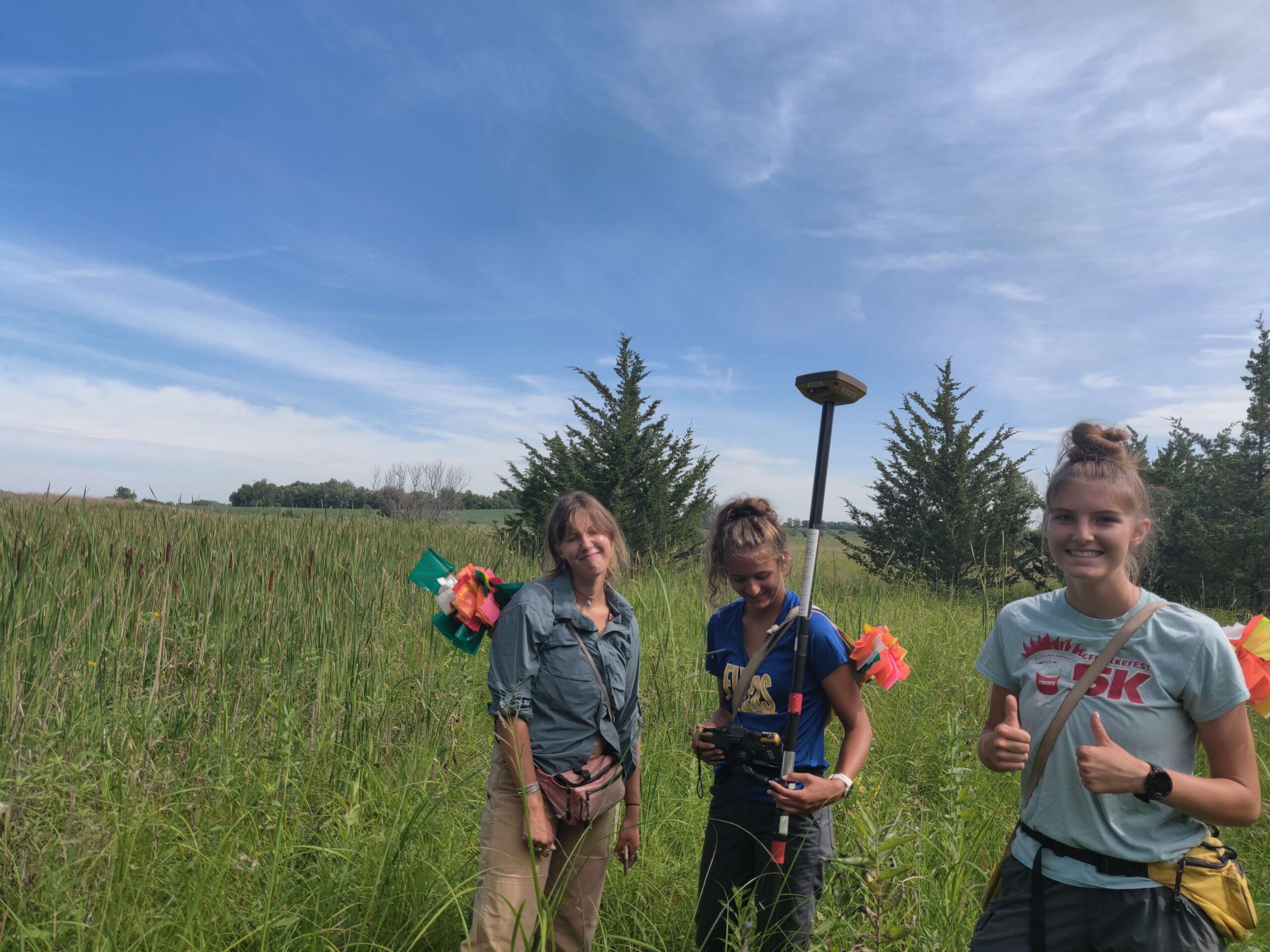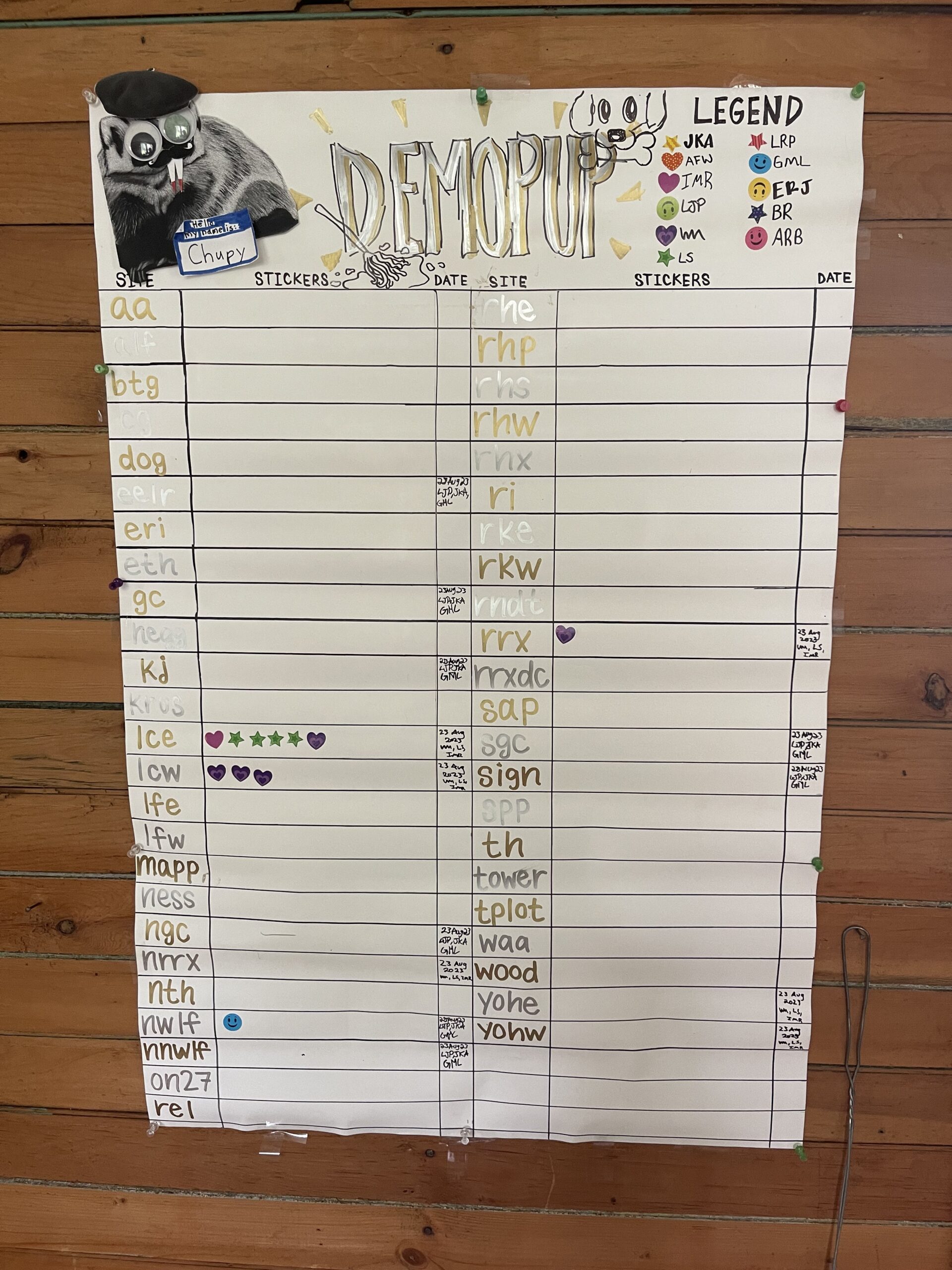This recruitment experiment was established in 2000 to quantify seedling emergence and juvenile survival of Echinacea angustifolia during reintroduction to sites with varying land-use history and burn schedules. Before 2014, we collected detailed data on each plant in the plots. Since 2014, Team Echinacea has censused each plot yearly to collect demographic data for every flowering plant.
In 2023, Team Echinacea visited 7 recruitment plots and searched for 163 Echinacea angustifolia plants that had flowered previously. Across the 7 plots, we found 118 basal plants and 46 flowering plants, and we were unable to find 16 plants. Of the flowering plants, 11 plants flowered for the first time in 2023. For each flowering plant, the team collected demographic data (number of rosettes and flowering heads) and shot a GPS point at the exact location of the plant. There was at least one flowering Echinacea plant at 6 of the 7 recruitment plots where plants had flowered previously, but we did not find any flowering plants at one site, rhp.
There were also two sites, rhr and rhw, that we have no 2023 demographic information for. We did not visit these sites for total demo censusing, and it’s possible that we never visited them over the summer. Alternatively, we may have visited them and found no flowering plants. Rhw was present on “demopup” (a list of demo sites for mopping-up any flowering plants that may have been missed), so there were likely no flowering plants there this year. Rhr was not on the demopup list. Bizarre! Stay tuned for any updates we may uncover.


- Start year: Plantings in 2000-2002
- Location: Seven study plots on state land with different land use histories: old-field and restored grassland
- Overlaps with: Demographic census in remnants
- Data collected:
- Plant status (basal, flowering, not present), rosette count, flowering head count, GPS point for each flowering plant in each recruitment plot
- Recruitment plot demography and survey data are stored in demap
- Samples or specimens collected: NA
- Products: A paper (Wagenius et al. 2012) published in Restoration Ecology
You can read more about the fire in recruitment experiment, as well as links to prior flog entries about this experiment, on the background page for this experiment.

Leave a Reply